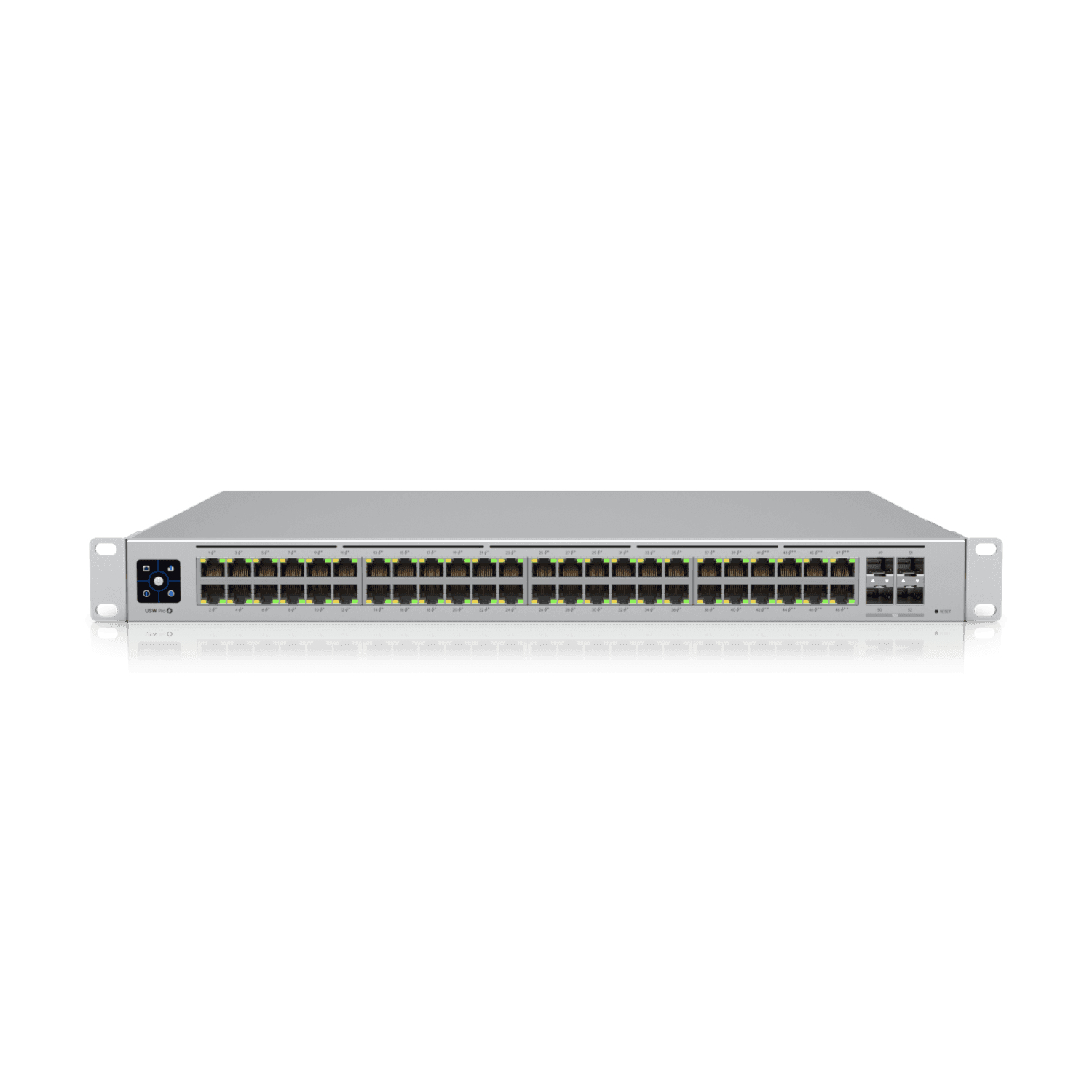Dedicated “Point-to-Point” Fiber from the core to every endpoint, rather than GPON or shared loops.
How Kibbutz Divat built a Community-Run ISP with UniFi
Kibbutz Divat’s volunteer-led gigabit fiber network, built with UniFi’s user-friendly platform, cut ISP costs and reliance for 1,200+ residents. Over 700 endpoints now ensure robust security, easy scalability, and near-zero downtime.

Background
Kibbutz Divat, a community of roughly 1,200–1,400 residents in Israel, once struggled with outdated network hardware that routinely dropped 5% of packets and provided little to no security. Leading a volunteer telecommunications committee, David Sharon set out to modernize the infrastructure. The result: a fully operational, one-gig symmetrical fiber-to-the-home network spanning more than 700 endpoints—built and managed almost entirely by the kibbutz itself.
From the standpoint of local culture, it was a bold move. Divat has a longstanding practice of “shared resources,” and the new network fits that philosophy perfectly. By investing in fiber-optic lines and UniFi equipment, the kibbutz reduced dependency on external ISPs, slashed subscriber costs, and delivered reliable, high-speed connectivity to every home, office, and communal space.

Business Objectives
Eliminate Chronic Packet Loss: Provide stable, high-bandwidth internet without the 5% drop rates experienced on legacy devices.
Enhance Security & Isolation: Use VLAN segmentation and modern switches to protect sensitive data and comply with national privacy regulations.
Ensure Affordability: Offer internet, IP-based TV, and telephone services at one-third the regional market price.
Simplify Maintenance & Scalability: Allow volunteers and small IT teams to manage the entire network without hiring expensive outside consultants.
 Enterprise Fortress Gateway (HA Pair)25G Cloud Gateways using VRRP
Enterprise Fortress Gateway (HA Pair)25G Cloud Gateways using VRRP Hi-Capacity AggregationA 32-port, Layer 3 switch made for high-capacity 10G SFP+ and 25G SFP28 connections.
Hi-Capacity AggregationA 32-port, Layer 3 switch made for high-capacity 10G SFP+ and 25G SFP28 connections. Pro 48 PoEA 48-port, Layer 3 switch capable of high-power PoE++ output.
Pro 48 PoEA 48-port, Layer 3 switch capable of high-power PoE++ output. U6 EnterpriseCeiling-mounted WiFi 6E AP with 10 spatial streams and 6 GHz for seamless multi-band coverage in dense environments.
U6 EnterpriseCeiling-mounted WiFi 6E AP with 10 spatial streams and 6 GHz for seamless multi-band coverage in dense environments.Background
Kibbutz Divat’s co-op model dates back decades, supporting various community needs from shared dining halls to collaborative agriculture. When it came to telecommunications, however, the group faced constant technical hurdles. The old switches didn’t support VLAN isolation or robust security protocols, which meant local users could see each other’s devices, and slow speeds or dropped Zoom calls became everyday annoyances.
That’s when David Sharon and the kibbutz’s telecom committee decided to act. They explored multiple vendor options but landed on UniFi primarily for its user-friendly console and integrated approach. Sharon, a network engineer by trade, wanted a system that even non-technical volunteers could master. He soon discovered that UniFi could seamlessly manage fiber uplinks, VLANs, and Wi-Fi, all in one place.
The fiber build-out itself took time—sometimes shipments were delayed for weeks or even months, forcing the project to advance in fits and starts. Yet with patience and carefully staged rollouts, the committee replaced the older equipment node by node, gradually adding more residents to the new network. By the time the project was complete, everyone in the kibbutz enjoyed symmetrical gigabit speeds with dramatically improved stability.
Why UniFi
One of the biggest draws was UniFi’s single-console management. In just a few clicks, David could create a new VLAN or isolate traffic for specific users—tasks that would have required manual configuration on dozens of switches with the previous setup. This consolidated view gave the committee real-time insight into packet loss, bandwidth usage, and hardware status.
Additionally, UniFi’s design lowered the kibbutz’s reliance on outside experts. Because the controller interface is straightforward, volunteers could learn to troubleshoot and implement updates on their own. This advantage was crucial in an environment where budgets are tight and where the whole point is to keep internet bills as low as possible for local families.
The technology also meshed well with the kibbutz’s future plans. They have begun testing UniFi Enterprise Gateway devices to eventually replace their FortiGate routers, aiming for a fully UniFi-managed solution. They’ve even introduced UniFi Access Points in communal halls to ensure seamless Wi-Fi, ending complaints tied to random consumer-grade routers that used to litter the public areas.

Deployment Story
Rolling out the new network demanded both planning and flexibility. Sharon started by piloting a handful of UniFi Switch Aggregation Pro devices in a limited zone. Once the team confirmed performance gains—especially the dramatic drop in packet loss—they slowly added more links, reconfiguring fiber endpoints one by one. Each household typically faced less than two minutes of downtime during the switchover.
The committee scheduled migrations around residents’ daily routines, initially making phone calls before flipping each switch. After a few weeks, though, they realized hardly anyone noticed the brief interruptions—so they quietly finished the rest of the deployment without the courtesy calls. Before long, the kibbutz had replaced its entire patchwork of old equipment with a new backbone of UniFi Switch Pro 48 and Pro Aggregation models.
Security also took a major leap forward. VLAN isolation ensures that each home, business, or public facility stays separate. There’s a dedicated network for cameras and internal resources, too—making it far easier to maintain compliance with Israeli data protection standards.
Looking Ahead
Kibbutz Divat aims to complete its transition to a purely UniFi-based architecture by testing UniFi Enterprise Gateway at a local K–12 school. The potential move would consolidate firewall, routing, and content-filtering duties under one roof, freeing them from the cost and complexity of managing external appliances.
In addition, the community is steadily expanding UniFi Access Points into more public gathering spots. With robust, centrally managed Wi-Fi in these communal areas, the kibbutz can sidestep the pitfalls of random consumer routers, further enhancing user experience. For the residential side, David and his team are also exploring future CPE alternatives that deliver advanced features at a price friendly to a co-op budget.
In short, Divat’s experience with UniFi underscores how a small, volunteer-driven operation can tackle large-scale networking challenges—when the technology is intuitive, scalable, and open to continuous improvement. By fully embracing a shared resource model, they’ve not only lowered service fees for their neighbors but also created an ISP-grade network that rivals commercial providers.
Win $10,000 in Ubiquiti Store Credit
Do you have an inspiring case study you'd like to share? It's a fantastic opportunity to showcase your success and get rewarded. Click below to submit your case study now!


